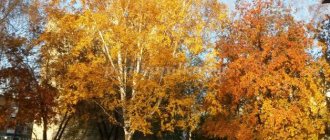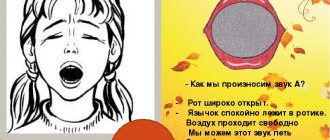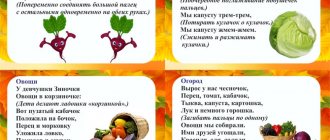Experience with coloring Chinese cabbage
Well, in conclusion, another spectacular experiment. You can make it with either Chinese cabbage leaves or white flowers, such as tulips or roses.
It's simple. If flowers or cabbage are placed in colored water, then very soon they will turn the same color that we used to color the water. Within an hour the first results will be visible. And after two, the color will become even more saturated.
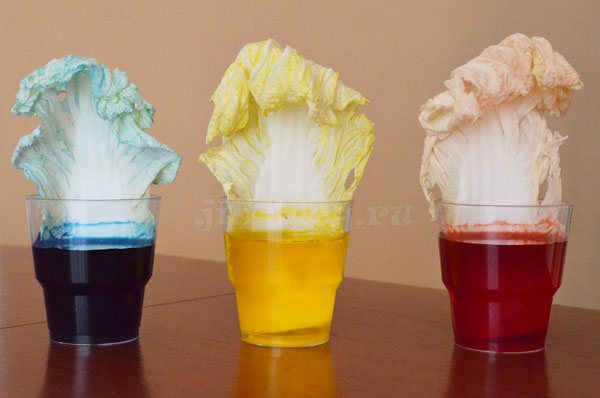
Very important note! Cabbage will not be colored if you add gouache, watercolor, and even that dry dye in tablets that is used to color eggs for Easter to the glass for color! Only confectionery food colorings are suitable, preferably liquid ones. We tried all this, and the experiment worked only with natural liquid dyes, like these.
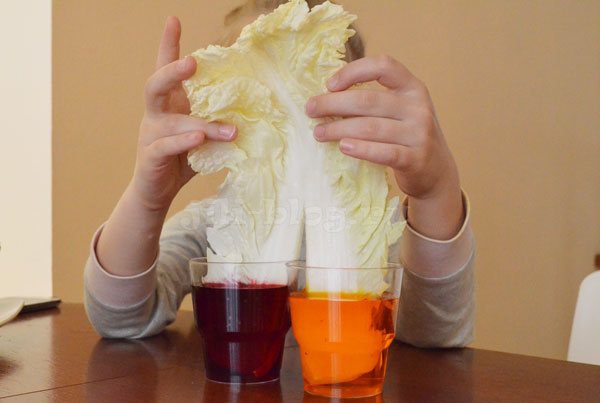
Very interesting results can be obtained if you cut the base of a cabbage leaf into two parts and immerse it in water of different colors. Then you will see how the dyes will “fight” for their territory on the sheet
Conclusion of the experiment. Water nourishes the flower, penetrating through capillaries into all parts of the plant and transferring to it all the qualities of a liquid.
That's all, thanks for your attention! More interesting games for preschoolers can be found here. In order not to miss our new articles, join us on Instagram, VKontakte, FaceBook!
Source
Let's check how different materials allow water to pass through
Imagine with your child that you are caught in the rain and don’t have an umbrella with you. But the bag contains a lot of different things: a notebook, paper napkins, a plastic bag, a handkerchief, a sheet of cardboard. Which of these could be used to protect yourself from the rain? Prepare relevant materials in advance to test your hypotheses. You will need:
- plastic bag,
- piece of fabric
- paper,
- sheet of cardboard,
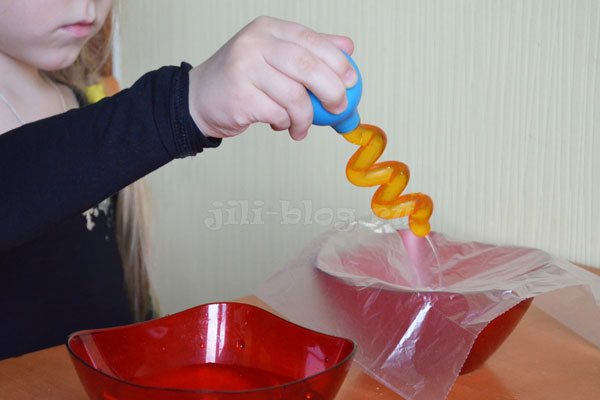
Slowly pouring water from a pipette onto all these materials, the child will understand that the fabric gets wet quickly, cellophane holds water well, and there is no hope at all for a paper napkin.
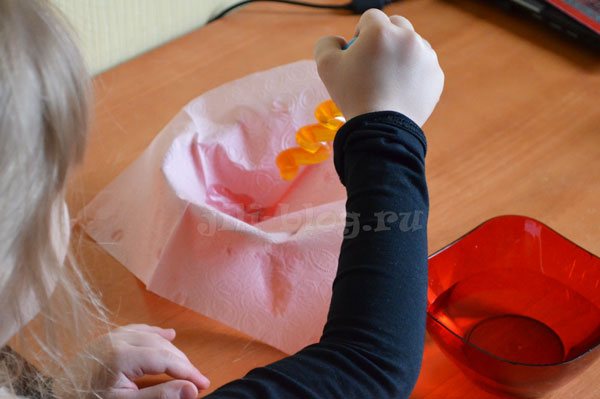
If your child is willing, be sure to display your results in your science notebook by writing down or sketching the experiment.
Water cycle in nature
L.N. Tolstoy
Where does the water go from the sea?
From springs, springs and swamps, water flows into streams, from streams into rivers, from rivers into large rivers, and from large rivers it flows into the seas. From other sides other rivers flow into the seas, and all rivers have flowed into the seas since the world was created. Where does the water go from the sea? Why doesn't it flow over the edge?
Question: Where does the water go from the sea? Why doesn't water flow over the edge?
All living things constantly need clean water. And the result of most reactions is dirty water. Where does nature supply endless supplies of clean water? This is why the water cycle exists in nature. Water, as you know, evaporates from the surface of reservoirs in almost any weather. But in the summer, in the heat, this process goes much faster and more intense.
Try to make your own diagram...
This endless cycle allows us to get by with the world's water supplies.
Checking the task...
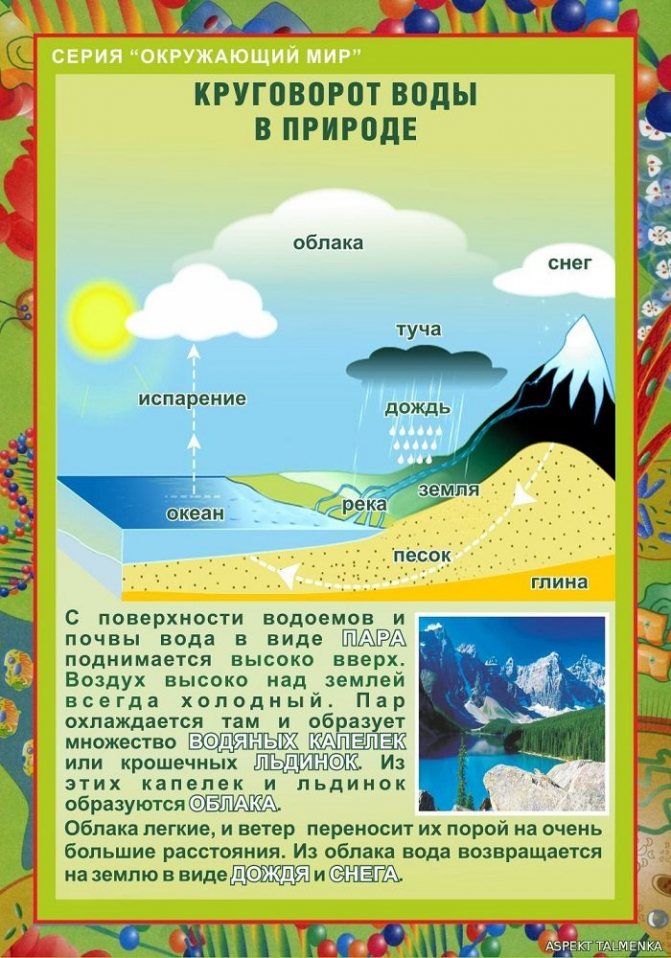
And more about the water cycle HERE
If you fantasize a little, then you and I drink the same water that the soldiers of Alexander the Great drank and swim in the same waters in which brontosaurs splashed and ichthyosaurs of the Jurassic period swam. It’s just that over millions of years, this water has traveled millions of times along the very circle that we call the Water Cycle in Nature.
Do you know the secrets of water...
We understand that nature really needs water, which means it needs to be protected!
Experimenting in water Fun experiments for children “Water OR Archimedes’ Laws”
Verification work
Water composition

The water molecule (H2O) is made up of 2 hydrogen atoms and 1 oxygen atom. These are two gaseous substances that, when combined, form incredibly strong bonds. The main role in the molecule is played by the oxygen atom. Hydrogen atoms carry a positive charge, and oxygen atoms carry a negative charge. Each of the hydrogen atoms, holding tightly in the formed molecule, is simultaneously attracted to the oxygen atom from the neighboring molecule. The bonds of oxygen and hydrogen from neighboring molecules are much weaker than those inside. Thanks to these intermolecular bonds, water has a number of amazing properties.
Some facts about water.
- In terms of name, water has many synonyms: hydrogen oxide, hydrogen hydroxide, dihydrogen monoxide, oxidane, dihydromonoxide, oxygen hydride.
- In small volumes, water is colorless. Thick layers of water have a bluish-green color.
- There are about 16 billion km3 of water on our planet—that’s 0.25% of the Earth’s mass. Of these, 0.2 billion km3 are lakes and rivers, 13 thousand km3 are atmospheric water vapor.
- 97.6% of known free water is found in the world's oceans. There is still 10-12 times more water in the Earth's mantle than in the ocean.
- On average, a person consists of 70% water, a jellyfish is 96%, and algae is 99%. A baby contains significantly more water than an older person.
- Human bones contain 22% water, blood - 83%, and the vitreous body of the eyes - 99%.
- A person, in a sense, is a hydraulic machine, therefore stagnation of fluid in different parts of the body or obstacles to its free movement necessarily cause diseases.
- About 1 ton of water passes through the human body every year.


